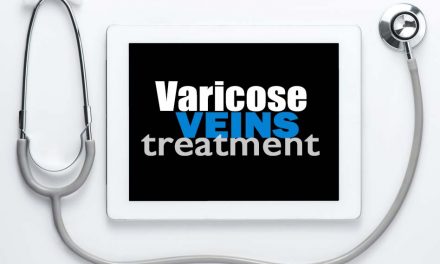
Laser vs. Injections for Spider Veins : Which is Best?

Treatments for Spider Veins
There Are Many Ways to Skin a Cat
Spider veins can be treated many different ways.
Laser vs. injections for spider veins is a common internet search query.
Check it out on www.realself.com
Which is best?
Patients often request the laser to treat their unsightly spider veins. Most people assume that because laser is high tech, it must be the latest and best treatment.
Not really.
Most people assume that it will take one only treatment. One and done. They think that afterwards that they will be “good to go” for life.
The truth is that there is a lot more to spider vein treatments than most people imagine.
Another common misconception is that laser treatments must be totally painless.
You have to realize that successful laser treatments require a heating process.
The heat from the laser is painful.
Some lasers use a cooling device to decrease the pain.
It still hurts. Many people say the laser hurts a lot.
Laser vs. Injections for Spider Veins and the Winner is …
Injections!
Another name for injections is sclerotherapy.
Why do injections beat laser for spider veins?
Because laser cannot treat the root of the problem.
The source of the blood that feeds the spider veins are called reticular veins. Reticular veins are the underlying, hard-to-see faint blue veins. If you pull the skin tight around your spider veins and look closely, you will see them. A common name for reticular veins is feeder veins.
If someone uses a laser alone on your spider veins and ignores the feeding reticular veins, you will not be happy.
Either the spider veins won’t go away or they will become worse in appearance. If they look like a permanent bruise where the veins were treated, that is called matting. Matting is the name of the complication when the veins look worse after a treatment. It is caused by ignoring the reticular veins when your spider veins were treated.
You will waste your money. Matting is very difficult and expensive to treat.
With matting, the treated area looks either like a bruise or a blush. If the fine newly created tiny veins are blue, it looks like a bruise. If the new tiny veins that are created from a treatment are pink, it looks like a blush.
Matting is harder to fix the area than if the spider veins were never treated before.
The bottom line is that all of the feeding reticular veins must be treated in order to be successful. There is often a network of feeding reticular veins under every patch of spider veins.
Laser cannot treat the feeding reticular veins.
That’s why laser alone loses in the laser vs. injections debate for the treatment of spider veins.
How Does Laser Work to Treat Spider Veins?
Laser works by heating the blood in the spider veins.
This heat causes the inside lining of the spider vein to die. The spider vein fades and is absorbed by your body.
The laser energy also heats the surrounding skin and nerves.
That is what makes laser spider vein treatments hurt.
The pain from the laser heating the surrounding nerves hurts more than the very fine (30 gauge) needles that are used with injections.
That surprises everybody.
People assume that laser is painless. Laser hurts more than the needle pinches!
What is the Standard of Care Across the Country for Spider Vein Treatment?
The gold standard for the treatment of spider veins still remains sclerotherapy.
Sclerotherapy is:
- More effective – it can treat the underlying feeder or reticular veins whereas laser cannot
- Less painful than laser
- Less expensive than laser
- Longer lasting than laser
That is why most vein centers which specialize in vein treatments recommend injections as the first choice for treatment for these small, unsightly cosmetic veins.
With injections, a liquid agent is injected through a very tiny needle directly into your veins.
This process causes them to collapse and eventually they are absorbed by your body.
This procedure can be utilized for any size spider vein and is very effective in experienced hands.
The Biggest Reason to Use Injections Rather Than Laser for Spider Veins
The most important advantage that injections have over the laser treatment of spider veins is that injections can treat the reticular or feeding/root veins which have caused the spider veins.
Without treating these reticular veins, the treatment will not be successful. Laser can not effectively treat most reticular veins at all because they are too large. The heat required to close these larger underlying veins would burn the skin.
Without treating the underlying root veins, any improvement in the appearance of the spider veins on the surface of the skin will not last as long.
The average cost of treating spider veins is $344.00 per treatment according to the American Society of Plastic Surgeons in 2014. It normally takes between three to five treatments. Do the math.
Then there’s the maintenance treatments.
Normally, people need to come in about once per year or two years for one treatment to maintain the appearance achieved by the initial series of treatments.
How Do Injections Work?
Injections are performed in the office setting.
Depending on the number of spider veins, the procedure may require five minutes to one hour. Afterward, you may wear ace bandages or compression hose.
Expect two to six sclerotherapy sessions to be performed at recommended intervals to achieve your desired results.
Perfection is not a realistic goal but we find that almost everyone feels very comfortable and happy in shorts or a bathing suit after their treatment sessions.
What is the Bottom Line?
The bottom line about laser for spider veins is that it is significantly more painful than injections (also called sclerotherapy).
Laser alone is almost always less effective than injections for spider vein treatment.
Lastly, laser treatments are more expensive because they require expensive laser machines.
Lasers are very expensive to buy and maintain.
A typical laser costs between $50,000 to $100,000. Maintenance costs run from $5,000 to $10,000 per year. Those costs have to be passed down to the patient.
No health insurance company covers the treatment of spider veins.
It is considered cosmetic just like a face lift or tummy tuck. Your total cost of treating your spider veins will be less with injections or sclerotherapy.
Therefore your laser treatment involves the increased cost of this expensive technology.
Sometimes, a combination of treatments is necessary or useful. Injections are necessary to close the feeding veins. Subsequently, laser can be used for the clean-up of the tiniest veins that remain.
Experienced sclerotherapists can treat both the reticular and spider veins in most cases without the use of a laser.
If matting occurs, laser is sometimes useful.
However, in most cases of matting there are underlying reticular veins or larger deeper veins that have been left untreated. In those cases, the use of ultrasound to identify and treat these underlying feeding veins is helpful.
Conclusion
Injections (sclerotherapy) remains the gold standard for the treatment of spider veins.
It takes on the average between two to six treatments to make your spider veins fade.
Realistic expectations must be stressed and fully explained to you during your initial consultation. Perfection is not possible. Therein lies the rub. When you are paying for these treatments out-of-pocket, you want all of those unsightly little veins to go away.
Some vein specialists jokingly say that sclerotherapy increases the eyesight of their patients. That is because when the larger spider veins fade, you often notice smaller ones which were always present.
Maintenance treatments are required to nip the new spider veins in the bud which will occur about a year after the initial series of treatments.
Maintenance usually involves just one treatment until it’s time for the next maintenance treatment.
It’s like exercising in that regard.
You will always continue to make new spider veins. No one can cure you of your spider veins forever.
Some places do not offer sclerotherapy because of the skill set of their vein specialists.
Those places only offer laser.
In that circumstance, I would seek a second opinion.








